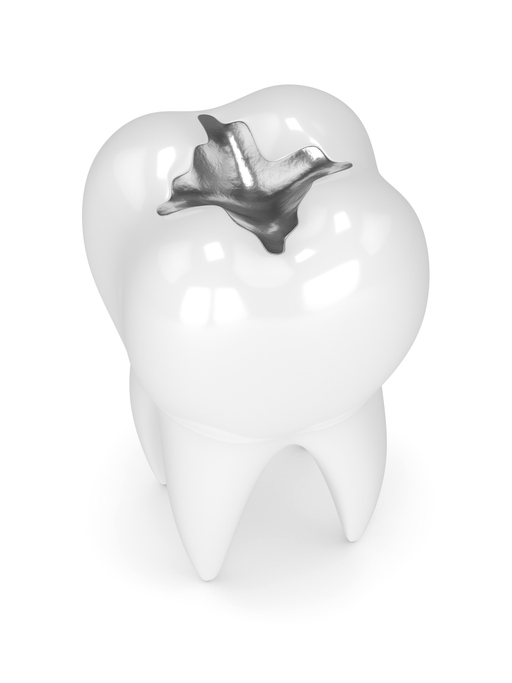 If you were to attend a lecture on dentistry practices of the mid 19th century you might expect to be educated on wooden teeth, but surprisingly this bygone era produced many modern advances in the field including the use of amalgam fillings (better known as “silver fillings”). Over a century later, Amalgam fillings are still a popular way to fill cavities, but this practice over the past few years has been under scrutiny. Amalgam fillings contain various metals including mercury, which many believe is released into the body when the filling is installed causing harm to the patients.
If you were to attend a lecture on dentistry practices of the mid 19th century you might expect to be educated on wooden teeth, but surprisingly this bygone era produced many modern advances in the field including the use of amalgam fillings (better known as “silver fillings”). Over a century later, Amalgam fillings are still a popular way to fill cavities, but this practice over the past few years has been under scrutiny. Amalgam fillings contain various metals including mercury, which many believe is released into the body when the filling is installed causing harm to the patients.
The American Dental Association as well as many other health organizations though disagree with toxicity experts, believing the fillings to be perfectly safe. Dentists still use amalgam fillings today, which leaves the decision up to the patient on whether to decide if they’re safe or not. Here are the main arguments in favor and in opposition of the use of amalgam fillings:
Opposition
The following are theories based on studies done by mercury toxicity experts and medical researchers on what effects mercury has when released into the body through an amalgam filling. These possible effects are thought to occur several years after exposure to the metal.
- Oral Effects: a metallic taste in the mouth, mouth sores, gingivitis an excess of saliva, and bleeding gums.
- Gastrointestinal Effects: abdominal cramping, diarrhea, constipation, and sensitivities to certain foods.
- Cardiovascular Effects: abnormally high or low blood pressure, irregular heart rhythm, and congestive heart failure.
- Neurological Effects: behavioral changes in mood and motor function, tremors, anxiety, depression, memory loss, and headaches.
- Fertility Effects: infertility, and a presence of mercury in breast milk as well as in the tissue of a maturing fetus.
- Other Possible Effects: impaired kidney function, a disruption of bacteria normally present in the digestive tract, dermatitis, thyroid complications, chronic fatigue, excessive perspiration, unexplained anemia and allergies.
It is believed that mercury can also increase a patient’s risk of developing: an adrenal disease, Alzheimer’s Disease, Hodgkin’s Disease, leukemia, lupus, multiple sclerosis, mononucleosis, scleroderma, as well as affect the body’s immune system.
Support
The following organizations: the American Dental Association, the Food and Drug Administration, the National Institute of Dental Research, the United States Public Health Service, the Consumers Union, and other health associations believe amalgam fillings pose no threat. They believe the fillings are:
- Cost Effective.
- A practical and a quick way to fill a cavity.
- Amalgam fillings have been around for over a century and have proven to be not only reliable, but safe.
- In the fillings, mercury is mixed with the other metals (silver, copper, and tin) which chemically bind together to form stable compounds, leaving only small amounts of mercury.
- Everyday, people are exposed to more significant sources of mercury through food, water, and air pollution.
- There is no scientific evidence that links mercury to multiple sclerosis, degenerative or neurological diseases.
- It is true that small amounts of mercury vapor can be released from the fillings, but for it to even have the tiniest affect on a person they would have to have almost 500 amalgam fillings.
- The use of amalgam fillings is the most widely practiced way to treat cavities and if they were harmful effects they would be seen worldwide on large amount of the population.
Alternatives to Amalgam Fillings
Even though amalgam fillings has been the primary way dentists fill cavities, there are alternative methods.
- Gold fillings are a great option – being the only alternative method that is as durable as amalgam and is actually stronger, but the downside is that it is more costly, takes more than one appointment to fill cavity, and is does not look natural in any way.
- Composite resins (“white fillings”) though are more natural- looking, but require more time to place and break easier than amalgam. They can also release chemicals, such as bisphenol-A and formaldehyde.
- Porcelain fillings, the most aesthetically pleasing option, keeps teeth looking like teeth, but are very costly and take more time to put in. It is also not as durable as amalgam and the fillings can be hard against other teeth when chewing.
